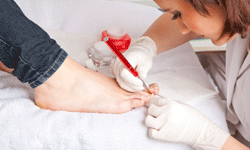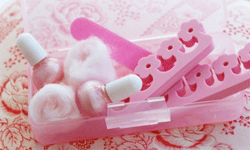At the first sign of summer, women everywhere kick off the thick socks and heavy boots of winter in favor of strappy summer sandals, flip-flops and sun-kissed bare feet. Before you expose your toes, however, it's best to hit the nail salon to give your lower digits a bit of cosmetic attention. After all, nothing ruins a great pair of open-toed shoes more quickly than ragged, overgrown nails and dry, callused skin. With more than 50,000 nail salons in the U.S. alone, you should have no problem scoring an appointment for that start-of-summer mani-pedi. Get the most out of your visit and learn to avoid potential problems with our list of the top 5 things you should do before going to the nail salon.
Advertisement


